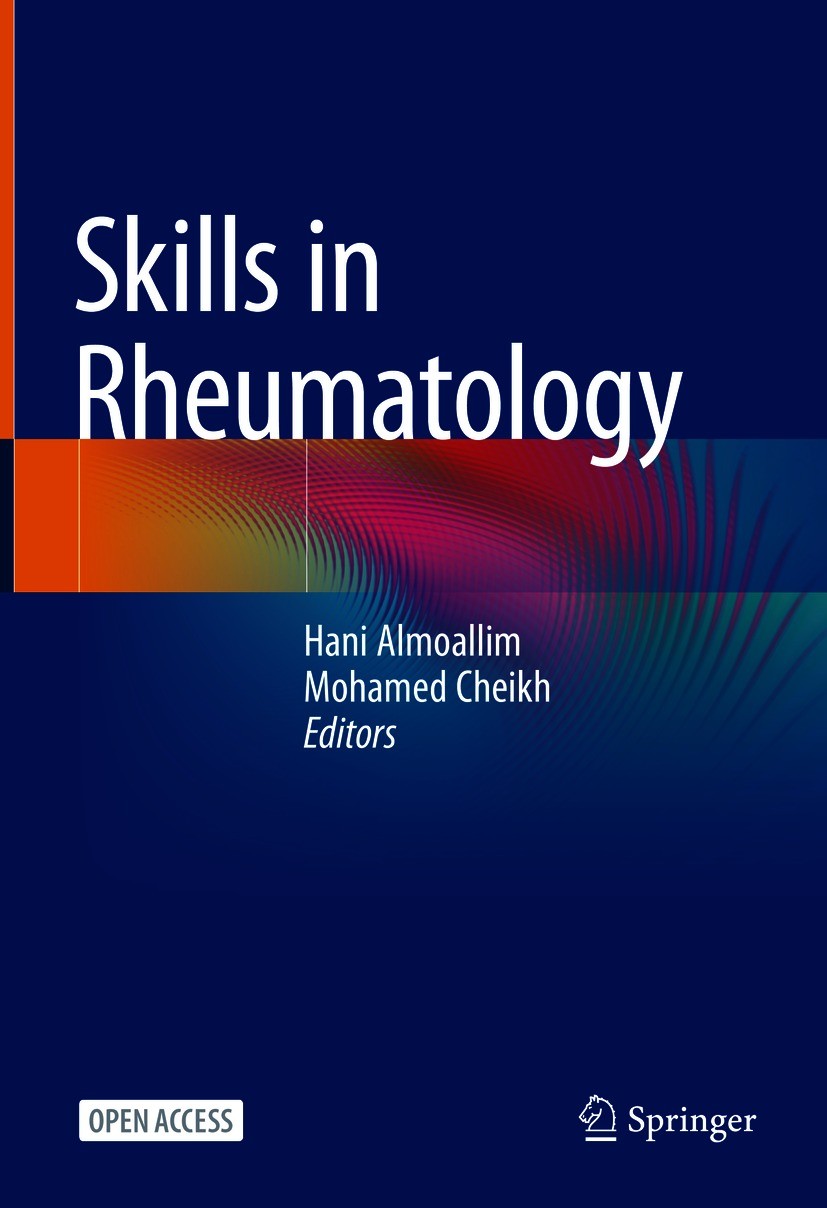| 书目名称 | Skills in Rheumatology | | 编辑 | Hani Almoallim,Mohamed Cheikh | | 视频video | http://file.papertrans.cn/869/868236/868236.mp4 | | 概述 | This book is open access, which means that you have free and unlimited access.Presents a comprehensive approach for managing rheumatology patients.Demonstrates easy musculoskeletal examination techniq | | 图书封面 |  | | 描述 | This Open Access book presents practical approaches to managing patients affected by various rheumatological diseases, allowing readers to gain a better understanding of the various clinical expressions and problems experienced by these patients. Discussing rheumatology from an organ systems perspective, it highlights the importance ofdetailed musculoskeletal examinations when treating patients affected by rheumatological diseases. The book first explores the latest diagnostic approaches and offers key tips for accurate musculoskeletal examinations before addressing the various treatment modalities, with a particular focus on the most common joints involved in rheumatoid arthritis: the wrists and the metacarpophalangeal joints (2nd and 3rd). Featuring easy-to-understand flow diagrams and explaining the common medical problems associated with rheumatic disease, such as shortness of breath and anemia, it is not only a valuable resource to rheumatologists, but will also appeal to medical students, junior residents, and primary healthcare physicians.. | | 出版日期 | Book‘‘‘‘‘‘‘‘ 2021 | | 关键词 | Musculoskeletal Examination; Rheumatic Diseases; Arthritis; Rheumatoid Arthritis; Autoantibodies; Disease | | 版次 | 1 | | doi | https://doi.org/10.1007/978-981-15-8323-0 | | isbn_softcover | 978-981-15-8325-4 | | isbn_ebook | 978-981-15-8323-0 | | copyright | The Editor(s) (if applicable) and The Author(s) 2021 |
The information of publication is updating

|
|
 |Archiver|手机版|小黑屋|
派博传思国际
( 京公网安备110108008328)
GMT+8, 2025-12-15 16:14
|Archiver|手机版|小黑屋|
派博传思国际
( 京公网安备110108008328)
GMT+8, 2025-12-15 16:14


